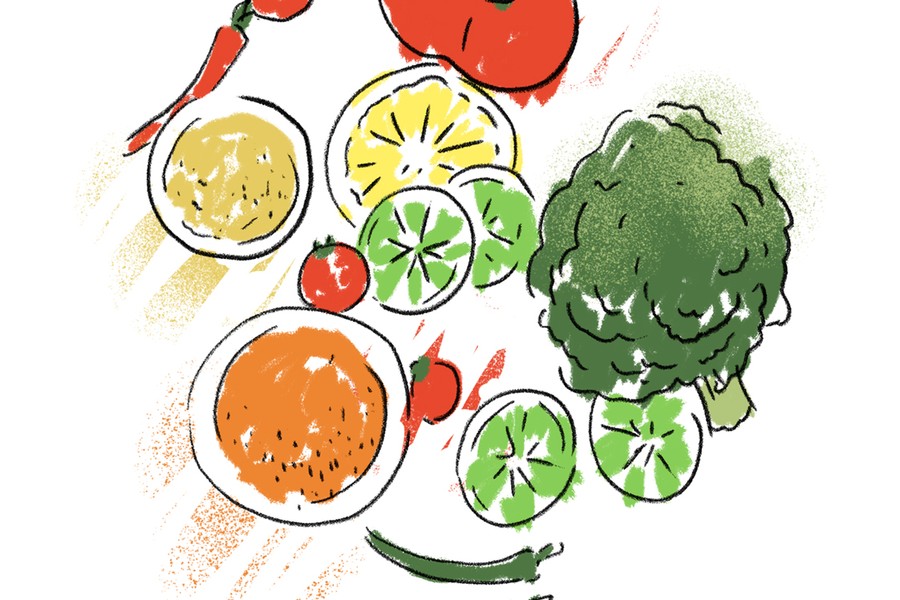This may also be the case for you, and unless you like bland food, or are on some kind of stoic dietary regime, you’ve probably used a blend of spices, seasonings and condiments to add flavour.
If so, as the global leader in ‘flavour’ manufacturing and distribution, the chances are that you’ve used a product from McCormick. McCormick produces a variety of spices, seasoning mixes, herbs, condiments and other cooking ingredients. It owns over 25 brands, including its namesake, Schwartz’s, Lawry’s, Frank’s Hot Sauce and French’s Mustard.
Although we may all be cooking more at home, the majority of McCormick’s portfolio are exposed to product categories which benefit from two deep-seated structural trends: health-conscious consumers buying more fresh and non-prepared foods; and consumers eating more diverse food due to the increasing popularity of foreign cuisines. Fresh produce perimeter sales have grown at twice the rate of overall food and beverage sales over the past decade in the US. Additionally, US millennials account for about one-third of total food consumption, but around half of organic food sales.
These factors indicate that healthy living trends are likely to persist into the foreseeable future and have enabled McCormick to grow its organic sales at +3.9% p.a. versus a sector average of +2.1% p.a. over the past decade.
Another positive for McCormick’s market exposure, particularly given current macroeconomic headwinds, is that demand for McCormick’s markets are fairly noncyclical and are relatively inelastic to disposable income. During the global financial crisis years of 2008 and 2009, McCormick still achieved positive organic growth of +4.8% and +2.5% respectively.
The business is split into two segments: ‘Consumer’ and ‘Flavour Solutions’. The Consumer segment is the largest and most profitable (62% of sales and 73% of operating profit), and sells directly to food retail channels, such as grocery and e-commerce. Meanwhile, the Flavour Solutions segment (38% of sales and 27% of operating profit) focuses on food service channels consisting of restaurants and Consumer Packaged Goods (CPG) companies. The Company’s two largest customers are Walmart and PepsiCo, representing c.22% of revenue collectively.
As the global leader in ‘flavour’ manufacturing and distribution, the chances are that you’ve used a product from McCormick.
In Consumer, half of revenues come from spices and seasoning. McCormick has an enviable position within this category; it possess a global share of c.20%, larger than its nearest rival, in what is a largely fragmented and regional market. In McCormick’s core spices and seasoning markets, its share is even higher, >40% in the US, UK and France. The company is also the single largest supplier of private label products to supermarkets, which includes the likes of Walmart. McCormick’s unique position of: 1) owning a portfolio of leading brands; 2) being the largest supplier of private label products; and 3) operating in a market with few real competitors, has created meaningful stickiness with customers.
McCormick’s scale, which is not just in spices and seasoning (over 60% of its brands are category leaders), gives it a cost advantage in purchasing, manufacturing and marketing; it can use its size to negotiate better prices on input costs and invest more into brands. It also enables the company to exert meaningful influence over category strategic direction at the retail level. For example, the company’s sales executives will often work directly with retail category managers to develop strategies designed to increase sales per square footage within stores. This allows McCormick to tailor the company’s product offering and pricing points to the specific needs of individual retailers. Such scale has enabled the company to exert pricing power over the past ten years: it has been able to put through an average annual increase of +1.6%, which is impressive when considering that prior to COVID, US food-at-home prices increased by just +0.5% p.a.
Although better positioned than many other consumer staples companies, McCormick has still struggled to increase pricing enough to offset significant commodity inflation: gross profit margin is expected to be 38.1% in the fiscal year ending 31 December 2022, down from 41.1% in FY20. This will weigh significantly on the company’s profit this year, with adjusted earnings per share expected to decline by c.-2%, despite expected revenue growth of c.+4%. Management do expect to recover margin over time through increased pricing, but any further spikes in inflation will likely lead to additional downgrades in profitability. McCormick has historically benefitted from solid revenue growth and operating margin expansion, the latter will however remain on hold until cost inflation begins to subside.
Illustration by Adam Mallett




